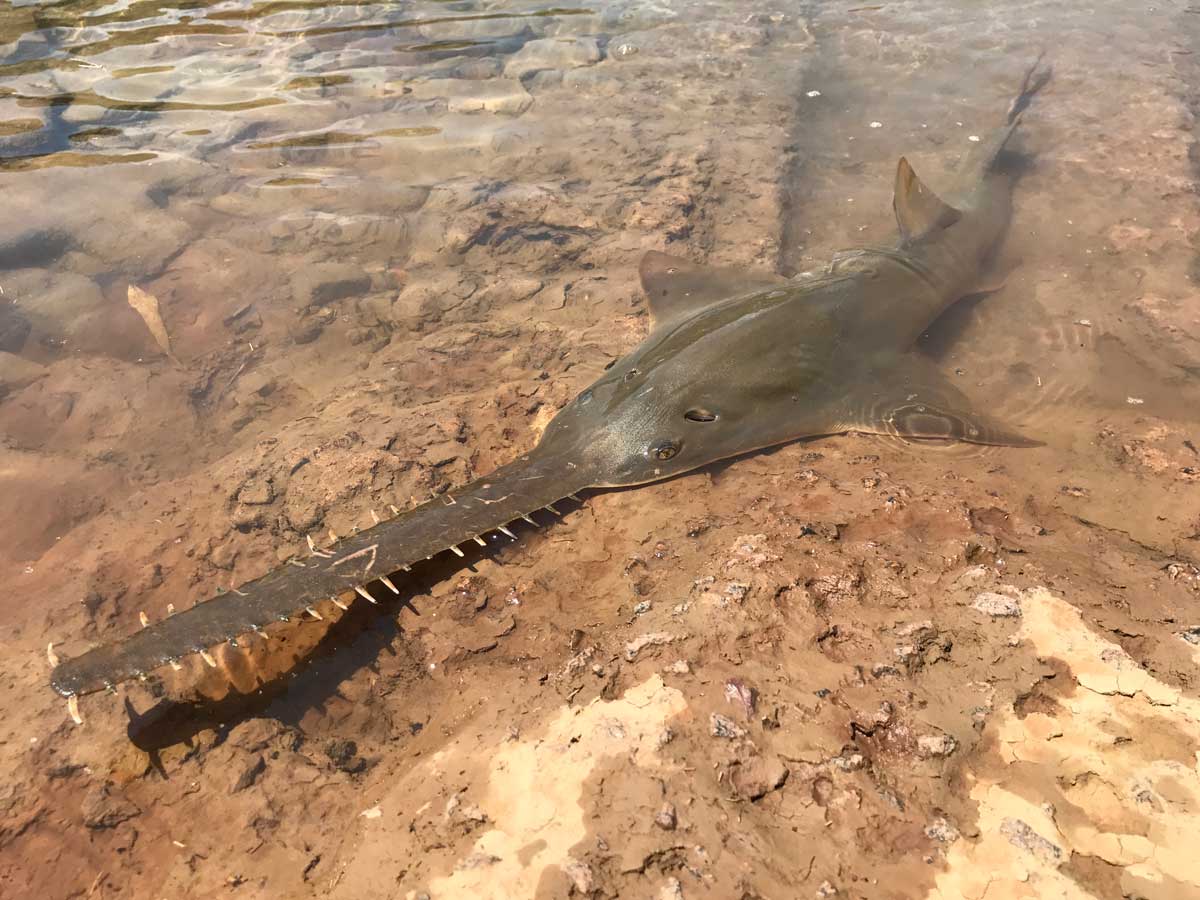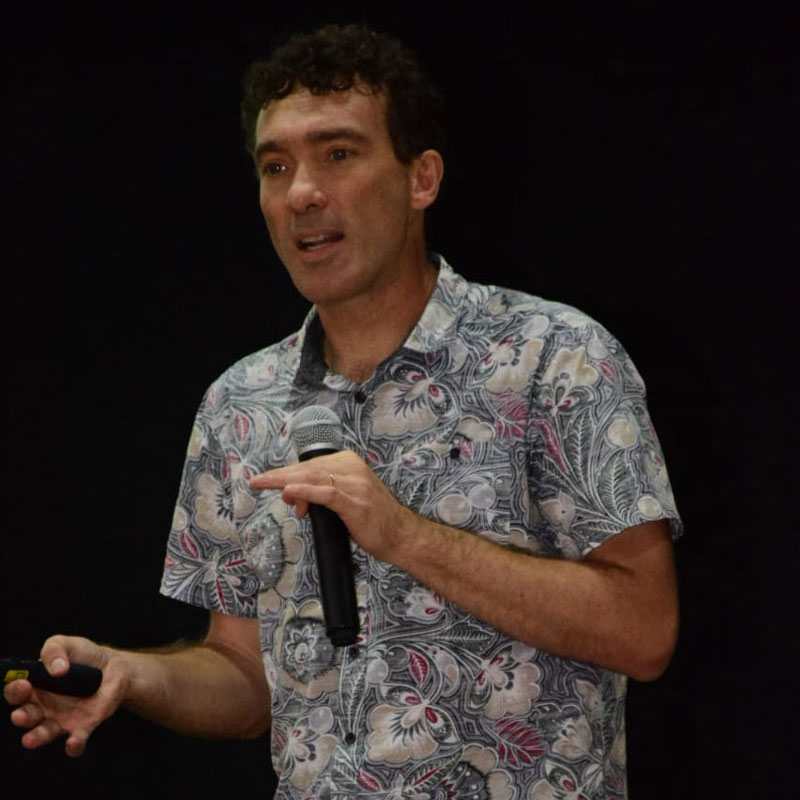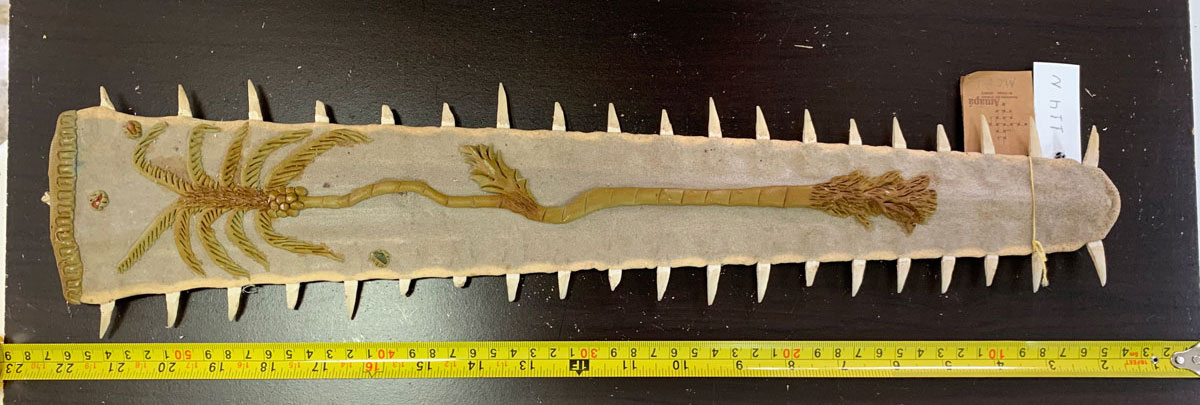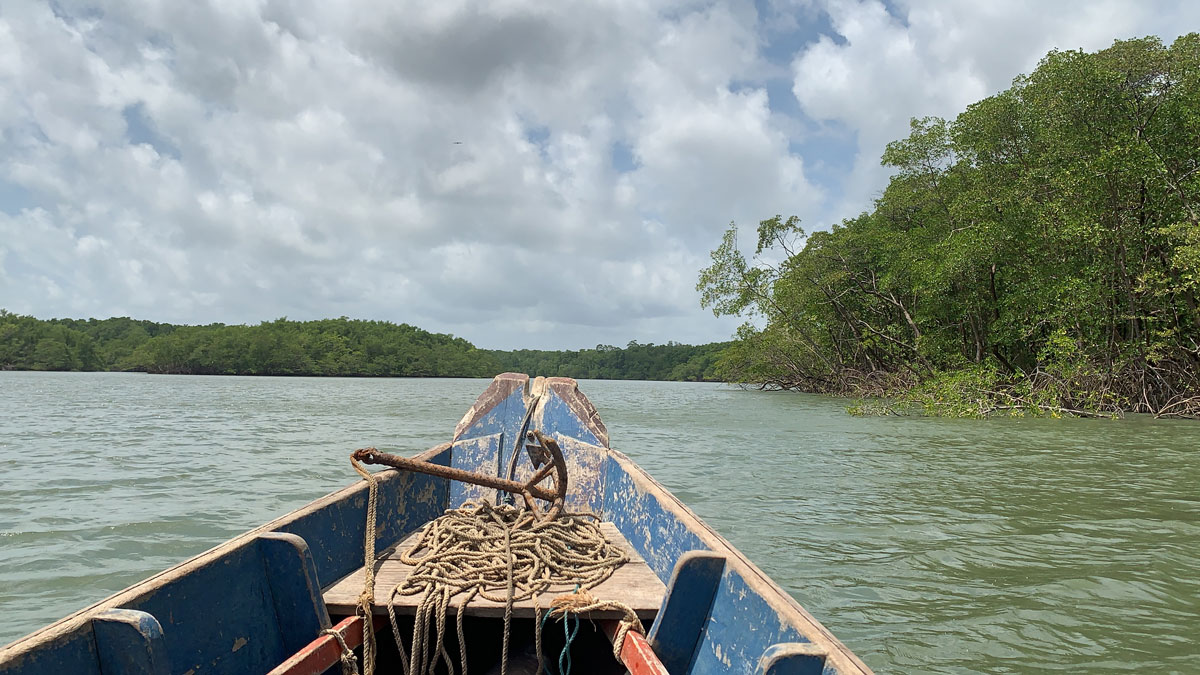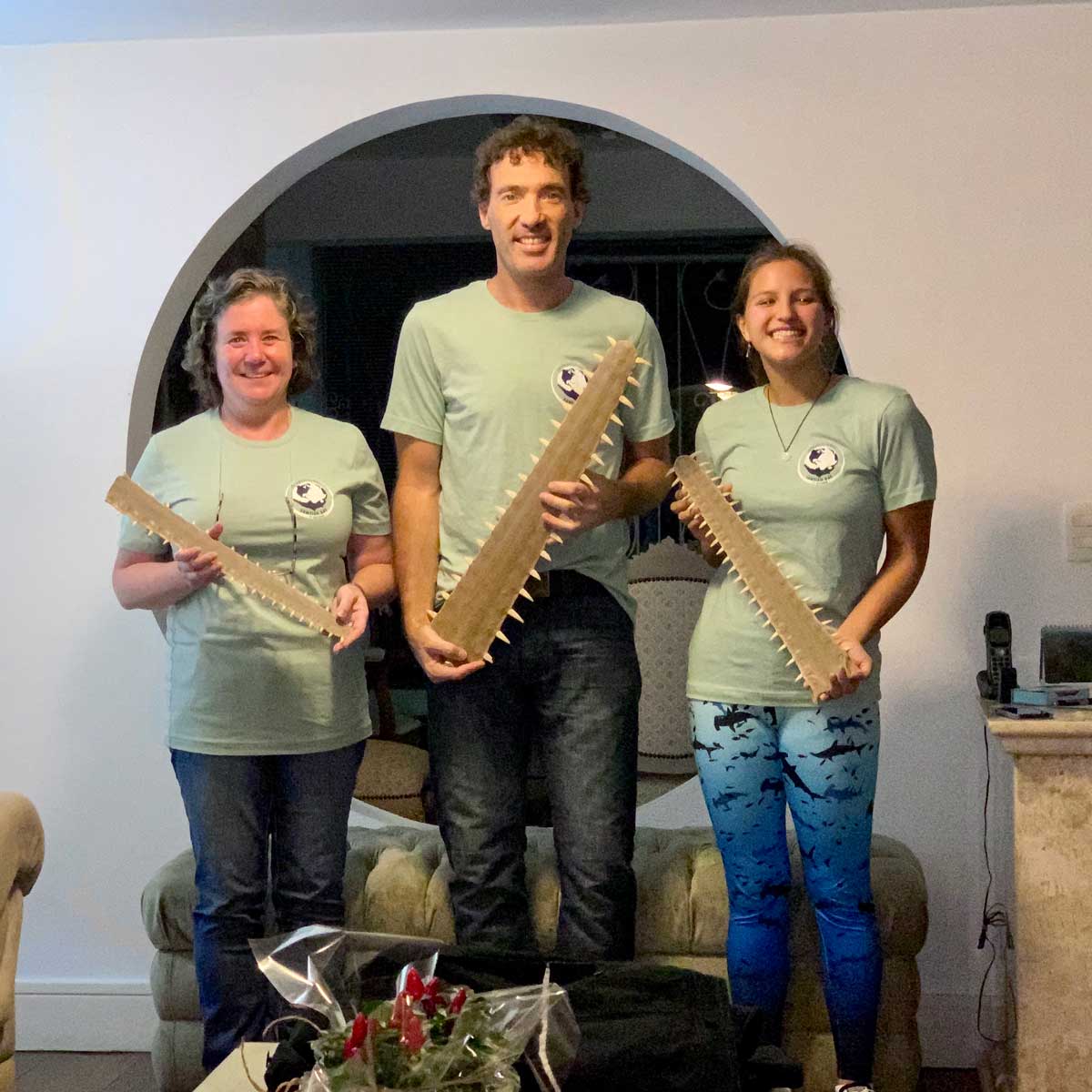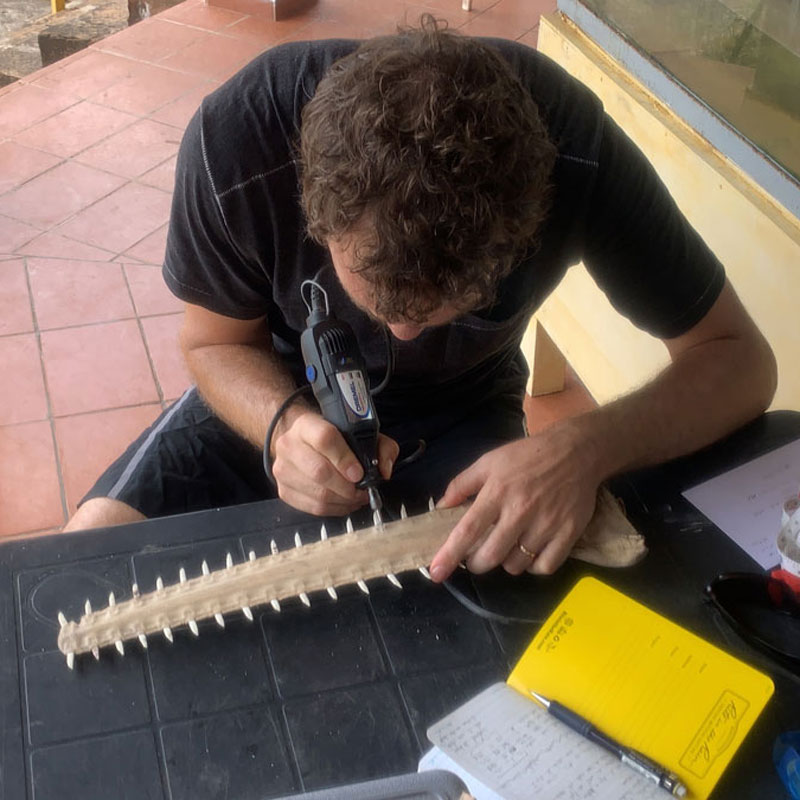Sawfish Teeth as GPS
Chemical Makeup of Teeth Could Lead to Better Protection for Critically Endangered Fish
The long, toothed nose - or rostrum - of sawfish may help a University of Idaho scientist determine where the fish hang out; and protect the species.
“If we know where the fish are during specific times of the year or during certain points of their lives, we can protect their migration paths or set aside nursery grounds,” said Jensen Hegg, an analytical lab manager and postdoctoral researcher at the U of I’s Department of Fish and Wildlife Sciences.
Sawfish are critically endangered, and largetooth sawfish live along the east coast of South America. At least some of the fish migrate between the freshwater of the Amazon Basin and the saltwater of the Atlantic Ocean.
“But nobody understands why they’re moving the way they do or even their migration patterns,” Hegg said. “In the meantime, they have a nose like a hedge trimmer and have never met a fishing net they didn’t like.”

Visiting Brazil
Jensen Hegg explains his study of sawfish and their teeth.
Hegg knew that sawfish teeth grew throughout the animal’s life. He also knew that water chemistry varies from place to place — including among fresh, brackish and saltwater. If sawfish teeth incorporate chemicals from surrounding water, the chemistry of the tooth would reflect the place the fish lived. And if the fish moved, the chemistry of the teeth would change to reflect the new environment. Hegg wanted to see if he could track the movement of a sawfish through their tooth chemistry, a process that has been successful in other fish species and using other hard structures. Migration data would provide critical information for conservation without having to find the elusive and rare fish in the wild.
They have a nose like a hedge trimmer and have never met a fishing net they didn’t like.Jensen Hegg
Hegg tested his hypothesis on two rostra housed in the U of I teaching collection. Working with senior Breanna Graves and a Washington State University lab, Hegg ran chemical analyses on the different layers of the teeth.
“We got really lucky with those two samples because you can clearly see the fish moving,” Hegg said.
On a recent Fulbright grant, Hegg traveled to Brazil, where he collected roughly 130 teeth, mostly from old rostra. On the black market, rostra are often decorated and sold as curios. Teeth from the sawfish are also used on the black market for cockfighting, replacing a rooster’s spur.
Hegg is waiting for sawfish teeth to clear customs before he analyzes the samples and learns more about sawfish migration in the Amazon region.
Article by Leigh Cooper, University Communications and Marketing.
Photos provided by Jensen Hegg and Peter Kyne.
Videos provided by Jensen Hegg.
Published in April 2020.







